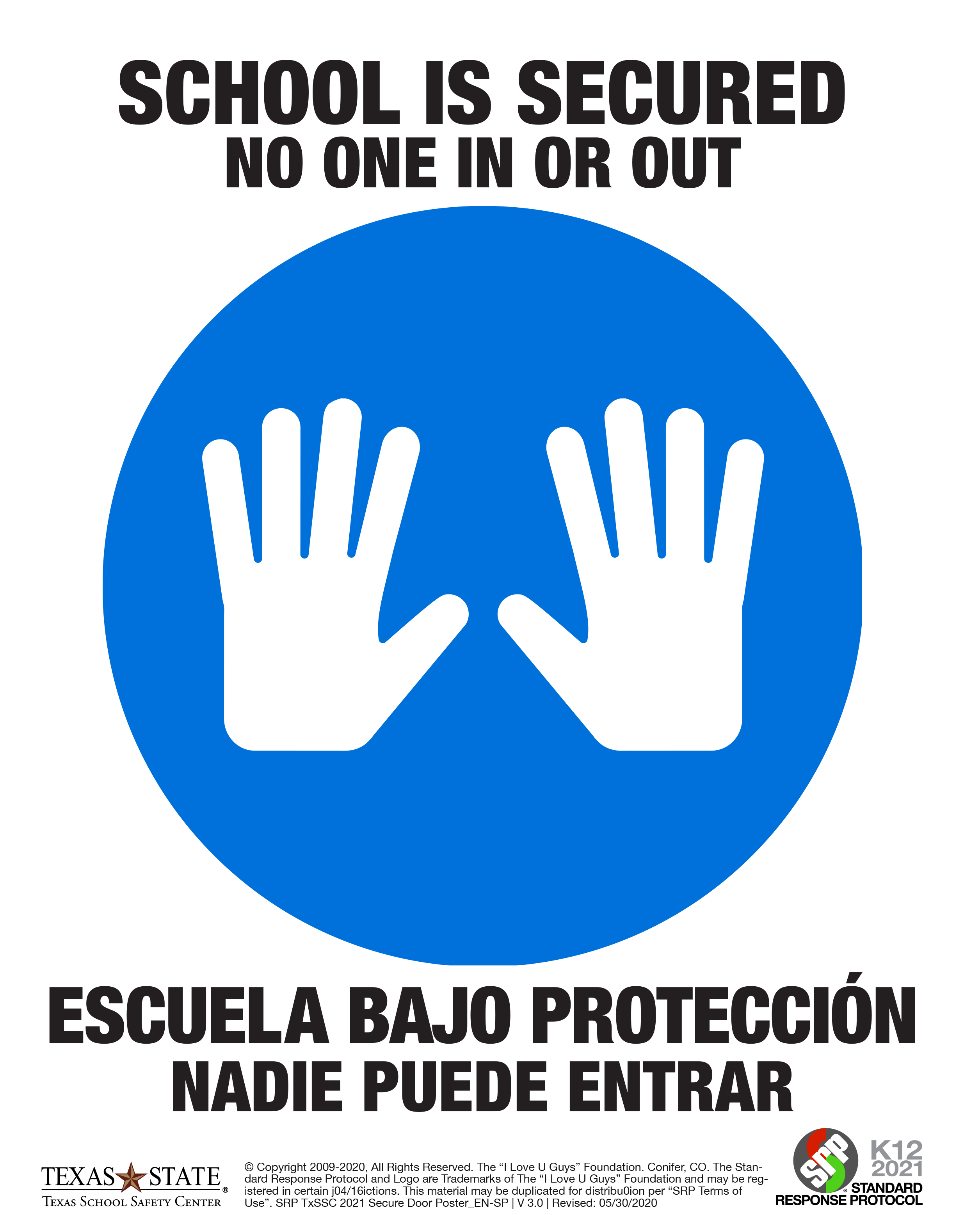TxSSC
K-12 Standard Response Protocol Toolkit
2.2 Secure

Condition
Secure is called when there is a threat or hazard outside of the school building. Whether it's due to violence or criminal activity in the immediate neighborhood, or a dangerous animal in the playground, Secure uses the security of the physical facility to act as protection.
Public Address
The public address for Secure is: “Secure! Get Inside. Lock outside doors” and is repeated twice each time the public address is performed.
“Secure! Get Inside. Lock outside doors.
Secure! Get Inside. Lock outside doors.”
Actions
The Secure Protocol demands bringing students into a secure building, locking all outside access points.
Where possible, classroom activities would continue uninterrupted. Classes that were held outside, such as gym class, would return to the building and if possible, continue class inside the building.
There may be occasions where students expect to be able to leave the building - end of classes, job commitment, etc. Depending on the condition, this may have to be delayed until the area is safe. During the training period, it should be emphasized to students as well as their parents that they may be inconvenienced by these directives, but their cooperation is important to ensure their safety.
Incident Command System
The School Incident Command System should be initiated.
Responsibility
During a Secure administration or staff may be required to lock exterior doors or windows. Staff members assigned "Primary Responsibility" for a "Secure Zone" would follow the designated protocol as well as during a drill. These areas may include doorways, windows, loading docks, and fire escape ladder access points.
The assigned staff is designated as having "Secure Duty."
There should also be a person assigned with "Secondary Responsibility" for Secure Duty in the event the person with "Primary Responsibility" is absent or unable to perform the protocol.
Assign someone to place the appropriate “Building is Secure” posters on the main entry doors so visitors are aware of the situation.
Reported By
Secure is typically reported by emergency dispatch to the school office. Office staff then invokes the public address and informs administration.
It may also be reported to the school office by students, staff, or teachers if a threat is directly observed outside of the building.
Preparation
Identification of perimeter access points that must be locked in the event of a Secure defines the "Secure Perimeter."
Secure Zones are areas of a school or campus where all exterior access points are identified, and protocols established so that each zone can be assigned to staff to ensure that those on "Secure Duty" secure all areas in their zone. å Preparation includes identification of staff with Primary and Secondary responsibility and assignment of these duties.
Drills
In Texas, Secure drills must be performed at least once per school year.
(Click above image to download Secure Poster.)
Contingencies
There may be physical attributes to the campus that mandate special handling of a Secure. An example would be a campus where modular buildings are present. If the modular building cannot be secured, it may be best for students to evacuate to the main building rather than going to Secure in the modular building. Listen for specific additional directives.
If the school is a distributed campus (multiple permanent buildings), they will have to consider what their perimeter is. In a perceived and indirect threat, they may decide that extra supervision for the class changes between buildings is sufficient and appropriate.
If during a Secure an additional hazard manifests i.e.: fire, flood, hazmat, then additional directives will be given for the appropriate response.
Examples of Secure Conditions
The following are some examples of when a school or emergency dispatch might call for a Secure condition.
- Unknown or unauthorized person on the grounds
- Dangerous animal on school grounds
- Criminal activity in area
- Civil disobedience
